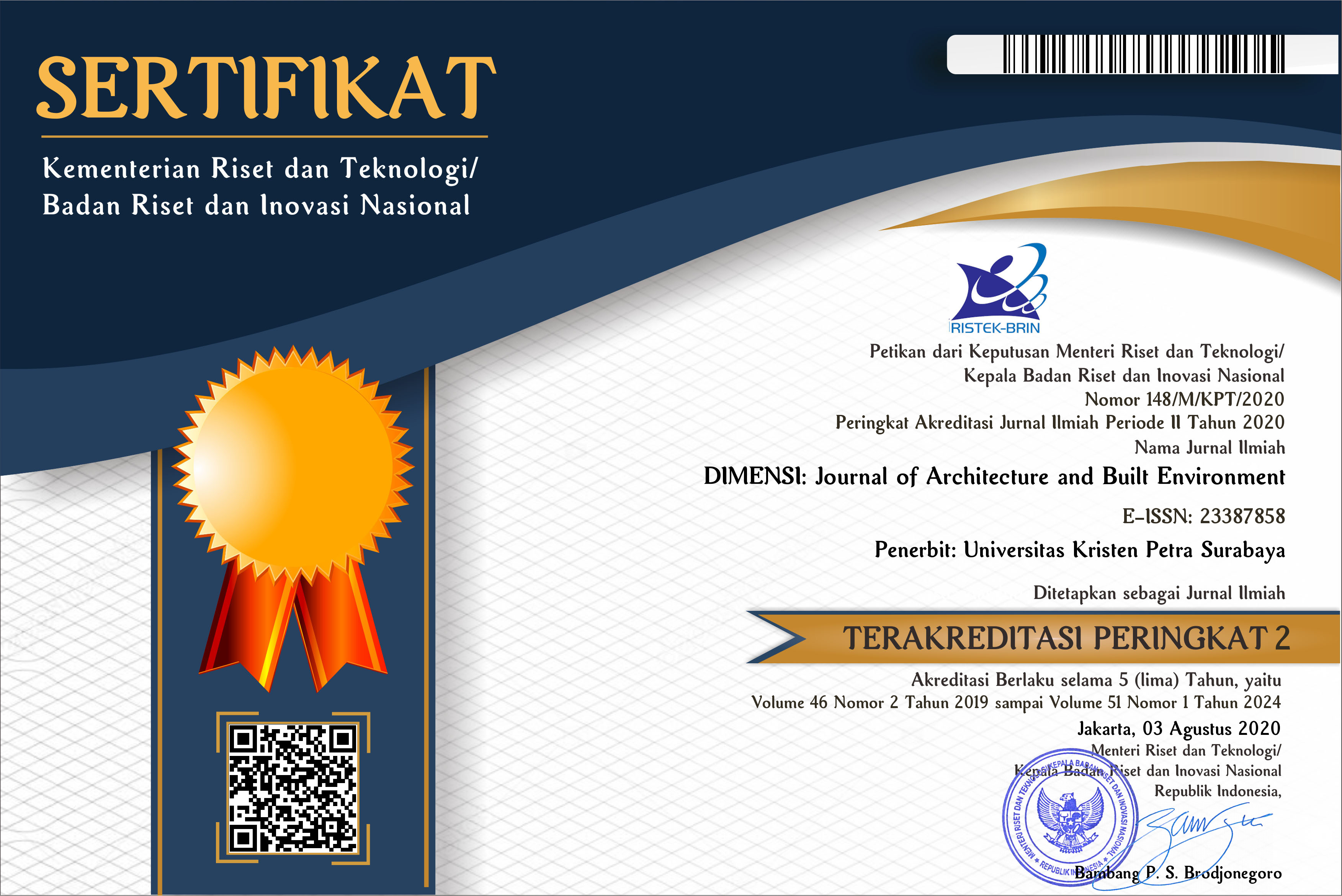SCIENTIFIC PLANNING AND SUPPORT INITIATIVE FOR LABORATORY INTENSIVE BUILDING: A CASE STUDY IN SINGAPORE
 :
:
https://doi.org/10.9744/dimensi.43.2.67-76
Keywords:
Building rating system, building simulation, energy savings, high performance building, laboratory intensive building.Abstract
This paper presents a case study of new multi-tenanted laboratory intensive building in Singapore with the target of energy savings at least 40% better than equivalent code-compliant building and surpasses Building Construction and Authority’s Green Mark Platinum building rating system. Scientific Planning and Support initiative was applied to this building to explore energy efficient strategies. Design charrette was conducted during initial stage to identify feasible, potential and cost-effective measures. Building stakeholders were actively involved throughout the design process, construction and operation to ensure the target can be achieved. Detailed modelling and simulation were performed throughout the design process to verify the proposed strategies. In addition, metering studies were carried out to benchmark office and lab plug load, while measurement study was conducted to verify energy savings through actual implementation device. The total building energy consumption is expected to reduce 44% compared to a code-compliant building on a yearly basis, being the first case study to demonstrate more than 40% energy savings in Singapore. This approach is proven to be the most effective solution to design and build a high performance lab building. It is hoped that the approach and energy efficient measures from this study could be replicable for other high performance building.Downloads
References
ASHRAE (2009). ASHRAE Handbook–Fundamentals. Atlanta, GA: American Society of Heating, Refrigerating and Air-Conditioning Engineers.[CrossRef]
BCA Green Mark Version 4.1 (2012). Certification Standards for New Buildings. Building and Construction Authori ty. Singapore.[CrossRef]
Chua, K. J., Chou, S. K., Yang, W. M. & Yan, J. (2013). Achieving better energy-efficient air conditioning. A review of technologies and strategies. Applied Energy, 104, p.87-104.[CrossRef]
ERIAN (2013). Design Charrette Report for North Spine Academic Building at NTU. [CrossRef]
ERIAN (2015). Office Plug Load Metering Study on NTU Campus. http://ecocampus.ntu.edu.sg/ Pages/CampusBenchmarking.aspx [CrossRef]
Factors Affecting Fume Hood Energy Consumption, http://www.i2sl.org/elibrary/documents/marian_whitepaper.pdf [CrossRef]
Gomez, M. & Sun, D. (2013). Smart Labs: Reducing Laboratory Energy Consumption. Journal of Chemical Health and Safety, 20(3), p.41.[CrossRef]
Hopkinson L., James P., Lenegan N., McGrath T., & Tait M. (2011). Energy Consumption of Univer-sity Laboratories: Detailed Results from [CrossRef]
S-Lab Audits, http://www.goodcampus.org [CrossRef]
Labs21 (2015). Right-sizing Laboratory Equipment Loads. http://www.i2sl.org/documents/toolkit/ bp_rightsizing_508.pdf [CrossRef]
Laboratories for the 21st Century: An Introduction to Low-Energy Design (2008). http:// http://www. i2sl.org/Marian J. S. (2009). [CrossRef]
SS 530 (2006). Code of practice for energy efficiency standard for building services and equipment. Singapore. [CrossRef]
SS 553 (2009). Code of practice for air-conditioning and mechanical ventilation in buildings. Singapore. [CrossRef]
Wilkins, C.K. & M.H. Hosni (2011). Plug Load Design Factors. ASHRAE Journal, May 2011.[CrossRef]
Downloads
Published
How to Cite
Issue
Section
License
Authors who publish with this journal agree to the following terms:
- Authors retain copyright and grant the journal right of first publication with the work simultaneously licensed under a Creative Commons Attribution License that allows others to share the work with an acknowledgement of the work's authorship and initial publication in this journal.
- Authors are able to enter into separate, additional contractual arrangements for the non-exclusive distribution of the journal's published version of the work (e.g., post it to an institutional repository or publish it in a book), with an acknowledgement of its initial publication in this journal.
- Authors are permitted and encouraged to post their work online (e.g., in institutional repositories or on their website) prior to and during the submission process, as it can lead to productive exchanges, as well as earlier and greater citation of published work (See The Effect of Open Access).


















